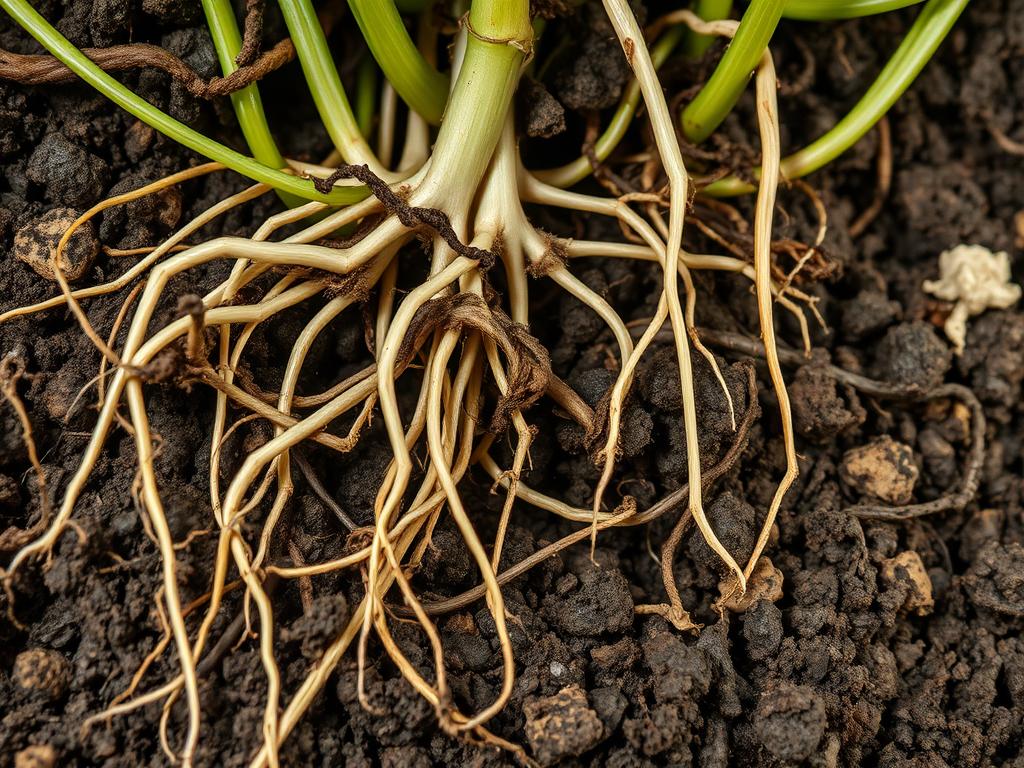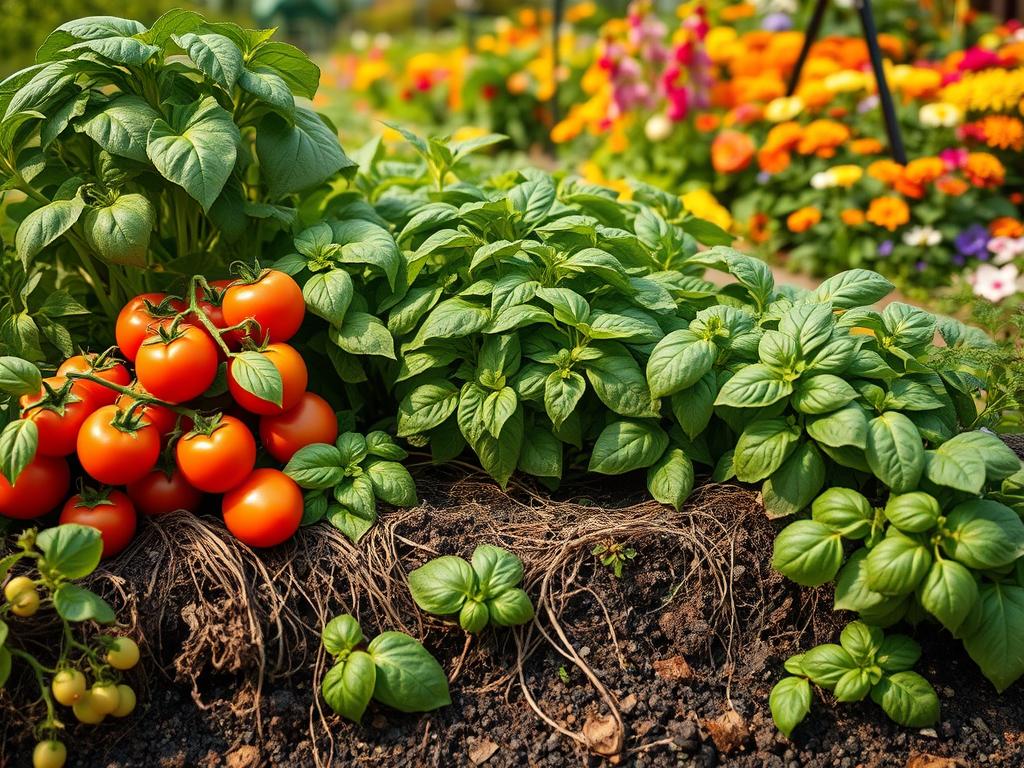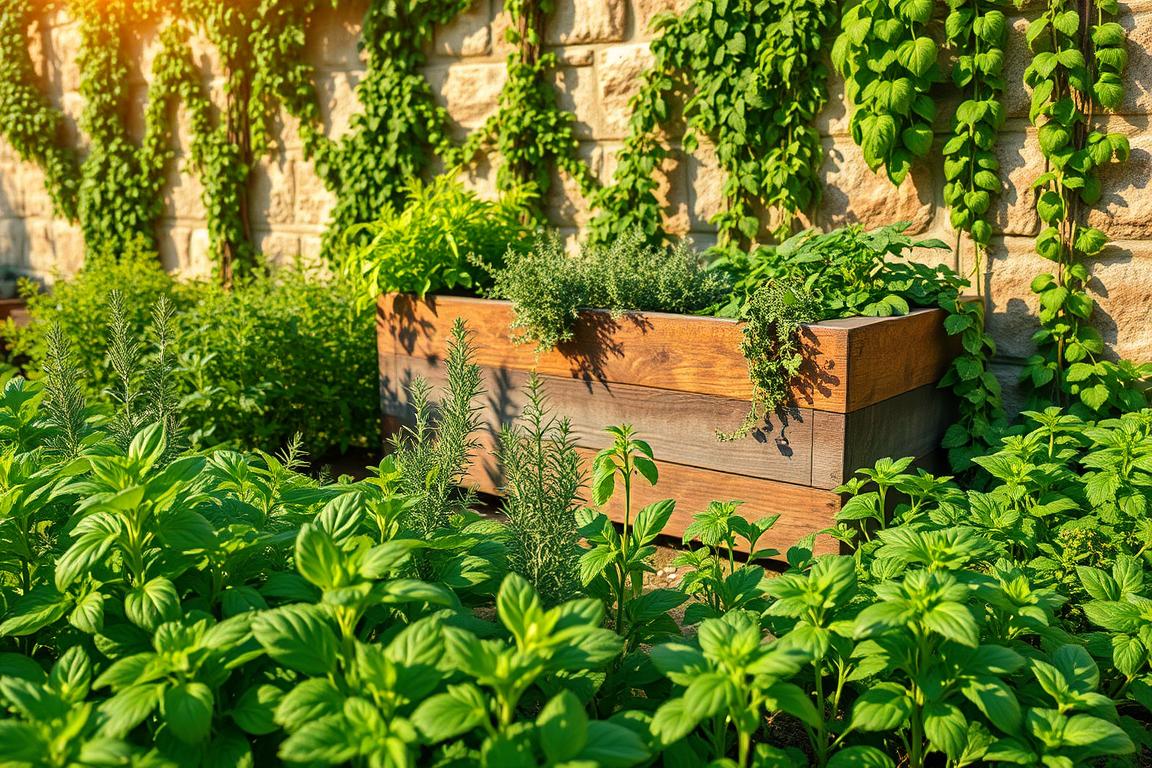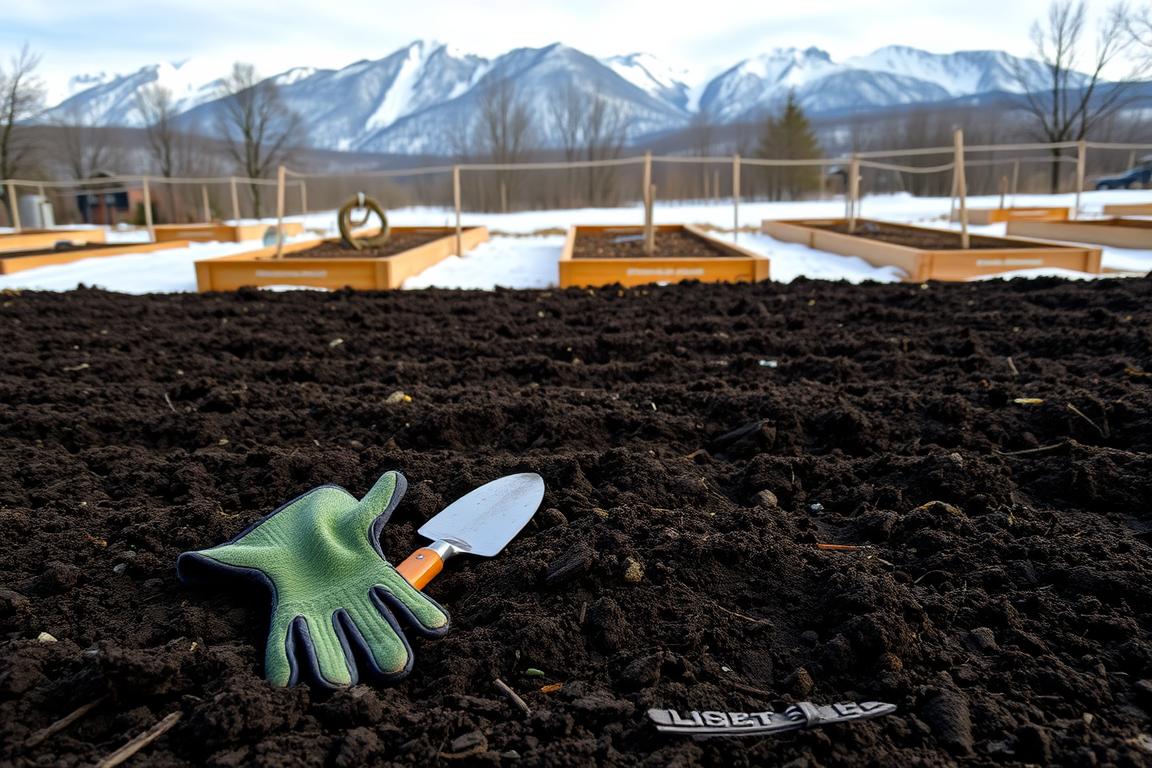Imagine your garden as a team where every plant supports its neighbors. This is the magic of companion planting, a method that pairs species to boost growth, deter pests, and create healthier soil. Whether you’re growing tomatoes or herbs, strategic partnerships can turn your space into a vibrant ecosystem.
Modern gardeners are embracing this approach as urban spaces shrink and eco-friendly practices rise. Ancient techniques like the Three Sisters—corn, beans, and squash—show how plants thrive together. Corn stalks support climbing beans, beans add nitrogen to the soil, and squash leaves shade the ground. It’s teamwork perfected over centuries.
Why does this matter today? Pairing compatible species reduces the need for chemicals while maximizing yields. Marigolds repel harmful insects near veggies, and basil improves tomato flavor. You’ll also make better use of limited space, whether you’re tending a backyard plot or patio containers.
Ready to transform your green space? Let’s explore how these partnerships work, why they’re surging in popularity, and how to apply them in your own garden. You’ll learn practical tips that blend science with tradition for healthier, more productive plants.
Key Takeaways
- Companion planting uses natural relationships to deter pests and improve growth
- Space efficiency makes this method ideal for urban or small gardens
- Soil health improves through nutrient-sharing plant pairs
- Historic methods like the Three Sisters remain effective today
- Reduces reliance on synthetic pesticides and fertilizers
Introduction to Companion Planting
Picture your green space as a bustling neighborhood where residents swap resources and watch each other’s backs. That’s companion planting in action – a gardening strategy where clever pairings create mutual benefits. Unlike solitary growing methods, this approach turns your plot into a collaborative network.
What Is Companion Planting?
This method combines species that naturally support one another. Tall sunflowers, for example, shield delicate lettuce from harsh rays. Legumes like peas add nitrogen to soil, feeding nearby leafy greens. Some pairings even confuse or repel pests – marigolds emit scents that keep aphids away from tomatoes.
Why It's Gaining Popularity in 2024
Urban gardeners are driving this trend, transforming balconies and rooftops into mini-ecosystems. Limited space demands smart solutions:
- Basil boosts tomato flavor while deterring flies
- Carrots and onions share beds without competing for nutrients
Environmental concerns also play a role. A 2023 National Gardening Survey found 68% of growers now avoid synthetic chemicals. Companion planting offers a natural alternative, reducing reliance on sprays while improving crop resilience.
The Science Behind Plant Partnerships

Think of your garden as a living laboratory where plants communicate through chemical signals and physical interactions. Modern research confirms what ancient growers observed – strategic pairings create measurable advantages that go far beyond basic pest management.
Benefits Beyond Pest Control
Marigolds do more than deter aphids. Their bright flowers attract beneficial insects like ladybugs and lacewings that devour 50-60 pests daily. This natural defense system works best when mixed with crops like kale or cabbage.
Diverse plantings confuse pests seeking easy targets. A Cornell University study found polycultures reduce insect damage by 40% compared to single-crop areas. Tall sunflowers shield tender lettuce from wind, while sprawling squash leaves keep soil moist for shallow-rooted herbs.
Improving Soil Health Naturally
Legumes like beans and peas act as underground fertilizer factories. Their roots host bacteria that convert atmospheric nitrogen into plant-friendly nutrients. This process feeds neighboring crops for months.
Deep-rooted carrots break up compacted earth, letting water reach lower layers. Meanwhile, fibrous onion roots create a net that prevents topsoil erosion. Together, these systems build richer earth that retains 30% more moisture according to USDA data.
Strategic pairings also recycle nutrients efficiently. When corn stalks feed bean vines climbing their stems, both crops yield 20% more than when grown separately. It’s nature’s perfect collaboration.
Best Companion Plants for a Thriving Garden
Envision your garden as a symphony where each instrument plays a vital role. When species work in harmony, they create stronger defenses, richer soil, and bigger harvests. Strategic pairings turn ordinary plots into resilient ecosystems buzzing with life.
Understanding the Role of Each Plant
Every species brings unique strengths to the garden community. Tall crops like corn act as living trellises for beans, while squash leaves provide shade and moisture control. This natural division of labor maximizes space and resources efficiently.
| Plant Role | Examples | Key Benefit |
|---|---|---|
| Structural Support | Sunflowers, Corn | Climbing surfaces for vines |
| Ground Defense | Squash, Nasturtiums | Weed suppression + moisture retention |
| Soil Enrichment | Beans, Peas | Nitrogen fixation |
| Pest Management | Marigolds, Garlic | Repel harmful insects |
How They Boost Growth and Reduce Pests
Certain plants release chemicals through roots or leaves that confuse hungry insects. A study by Michigan State University found basil reduces aphid populations on tomatoes by 42%. Meanwhile, beneficial insects flock to flowers like calendula, creating a natural security force.
Nurse plants like lettuce thrive under taller companions. Their shallow roots stay cool while taller neighbors block harsh winds. This teamwork leads to 30% faster growth compared to solo planting, according to urban farming trials.
How to Choose Complementary Plant Pairs

Your garden works like a puzzle where each piece supports the whole picture. Successful pairings begin with understanding your unique growing conditions and matching species that solve specific challenges.
Analyzing Your Garden's Needs
Start by sketching your garden layout. Note sunlight patterns and problem areas. A shaded corner might host mint that thrives in low light, while sunny zones suit tomatoes needing 6+ hours of direct rays.
Ask three key questions:
- Which plants struggle with pests or poor soil here?
- How much space do mature crops require?
- When do different varieties reach harvest time?
Group species with matching needs. Basil and parsley share water requirements, making them ideal companion herbs for a shared bed. Rotate fast-growing radishes with slower peppers – you’ll harvest radishes before peppers need the room.
In a 10×10 area, combine:
- 2 tomato cages (support beans)
- 10 bush beans (enrich soil)
- 3 eggplants (deter beetles)
This layout uses vertical growth and staggered harvests. Always check root depths – shallow lettuce pairs well with deep-rooted carrots, avoiding underground competition.
Expert-Recommended Plant Pairings
Think of these combinations as nature’s recipe book – time-tested formulas that solve common garden challenges. These dynamic duos offer built-in pest protection, space optimization, and flavor enhancement.
Classic Combos: Tomatoes & Basil
This iconic pairing works like a natural security system. Basil releases compounds that confuse tomato hornworms and thrips, reducing infestations by up to 40%. Many gardeners swear the herb enhances their tomatoes’ flavor through root interactions.
For best results:
- Space 4-5 basil plants 12″ from each tomato
- Choose compact varieties like ‘Genovese’ for container gardens
- Harvest basil leaves regularly to boost oil production
Other Effective Duos: Carrots & Onions
Underground allies make perfect partners. Onion roots emit sulfur compounds that repel carrot flies, while carrots’ deep taproots loosen soil for better bulb development. This combo yields 25% more carrots according to Utah State trials.
Try these combinations too:
- Beans climbing corn stalks (natural trellis + nitrogen boost)
- Cucumbers with nasturtiums (trap crop for beetles)
- Lettuce shaded by sunflowers (prevents bitter bolting)
These pairings succeed because each plant fills specific roles without competing. Like good neighbors, they share resources while watching each other’s back.
Gardening Tips for Successful Companion Planting
Think of your plot as a chessboard where every move maximizes productivity. Smart space management turns cramped areas into thriving ecosystems. Tall crops become living scaffolds, while low-growers protect soil – it’s all about strategic positioning.
Space Management and Strategic Placement
Vertical growth solves small-garden challenges. Pole beans climbing sunflower stalks yield 30% more than ground-grown varieties. Use trellises for cucumbers or melons – they’ll stay disease-free with better air circulation.
Raised beds let you pack plants tighter. Onions spaced 4 inches apart instead of 8? They’ll still bulb up nicely without walkways. Interplant radishes between slow-growing broccoli – harvest the roots before greens need room.
| Strategy | Examples | Space Saved |
|---|---|---|
| Vertical Layers | Corn + Beans | 40% |
| Ground Coverage | Squash + Lettuce | 25% |
| Timed Planting | Radishes + Peppers | 15% |
Create shade zones with sunflowers. Their broad leaves protect heat-sensitive spinach in July afternoons. Sketch your layout considering mature sizes – bush tomatoes won’t overshadow carrot patches.
Succession planting keeps beds busy. Sow quick-growing arugula after harvesting garlic. You’ll get 3 crops from one bed in a single season. It’s like having a rotating buffet for your kitchen!
Troubleshooting Common Companion Planting Challenges
Even the best plant partnerships can hit snags. While strategic pairings offer numerous benefits, some combinations create hidden conflicts. Recognizing these challenges early helps maintain your garden’s harmony and productivity.
Preventing Nutrient Competition
Heavy feeders like tomatoes and corn guzzle soil nutrients quickly. Avoid grouping multiple hungry crops together. Instead, pair them with light feeders like herbs or lettuce that demand fewer resources.
Mix deep-rooted and shallow-rooted varieties. Carrots dive deep for minerals while lettuce stays near the surface. This layered approach lets plants share space without fighting for food.
Avoiding Incompatible Pairings
Some species are natural rivals. Beans and onions stunt each other’s growth through chemical warfare in the soil. Sunflowers release toxins requiring a 12-inch safety zone around their stems.
Watch for yellowing leaves or stunted growth – clear signs of unhappy neighbors. Keep a journal tracking successful and failed combinations. What thrives in one yard might struggle in another due to local soil or climate differences.
FAQ
What is companion planting?
Companion planting is a gardening method where specific plants are grown together to boost growth, deter pests, or improve soil health. For example, basil enhances tomato flavor while repelling insects like aphids.
Why is companion planting trending in 2024?
More gardeners are embracing eco-friendly practices. Pairing plants like marigolds with vegetables reduces pesticide use, supports pollinators, and maximizes small spaces—perfect for urban and organic gardens.
How do carrots and onions benefit each other?
Onions repel carrot flies, while carrots’ deep roots loosen soil for shallow-rooted onions. This duo also optimizes bed space, making them ideal for raised gardens or containers.
Can companion planting replace fertilizers?
Some pairings naturally enrich soil. Pole beans add nitrogen to soil, benefiting nitrogen-hungry corn. However, nutrient-heavy crops like squash may still need compost for best yields.
What plants should never grow together?
Avoid pairing tomatoes with cabbage or fennel—they release chemicals that stunt growth. Similarly, keep dill away from carrots, as it attracts harmful pests like aphids.
How do I start companion planting?
Analyze your garden’s sunlight, soil type, and pests. Use tall crops like corn to shade lettuce, or plant nasturtiums near cucumbers to trap aphids. Start with proven pairs like tomatoes and basil.
Do flowers help in vegetable gardens?
Yes! Marigolds repel nematodes, while sunflowers attract pollinators. Calendula and zinnias also draw beneficial insects like ladybugs to control aphids and mites naturally.
Can herbs improve vegetable growth?
Herbs like rosemary deter bean beetles, and thyme repels cabbage worms. Mint keeps ants away but should be potted to avoid invasive spreading near veggies like peppers.
How does spacing affect plant pairs?
Use vertical space—grow pole beans on a trellis near corn. Leave room for roots; avoid pairing aggressive growers like mint with slow starters like parsley.






